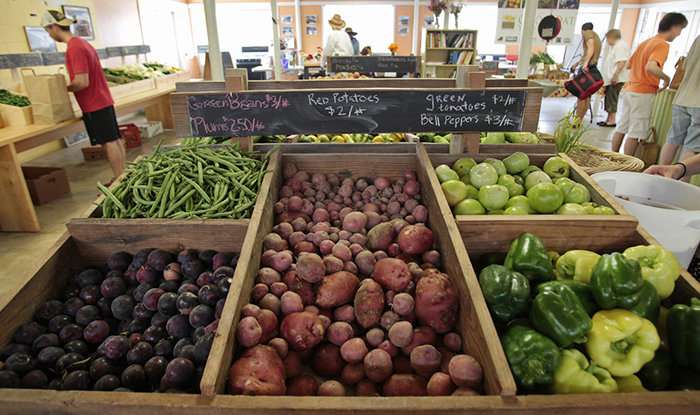Improving low-income residents' utilization of farmers markets

A pair of studies conducted at LSU Health New Orleans School of Public Health found reasons and possible solutions to improve low-income residents' access to fresh, local produce at farmers markets. The first study, published in the Journal of Public Health Research, found a lack of awareness of the existence of farmers markets, and of discounts and benefits available to low-income residents among those who did know about farmers markets.
"Our study for the first time shows that one barrier to farmers market utilization is simply not being aware that they exist.," noted Henry Nuss, PhD, Assistant Professor at LSU Health New Orleans School of Public Health.
The researchers developed a questionnaire to assess demographic information, awareness of farmers markets in New Orleans, food-purchasing behaviors, internet use, diet and preferences among a variety of marketing media. They found that nearly two-thirds (63%) of low-income participants had never been to a farmers market. The research team reported that 73% of participants did not know that farmers markets accept Supplemental Nutrition Assistance Program (SNAP) benefits, and 77% were not aware that patrons could receive additional discounts with SNAP purchases. The researchers then tested the feasibility of their novel, internet-based social marketing strategy, Healthy Roots for You.
The second study, published in Ethnicity & Disease, built upon the first study. Its findings included that low-income residents have adequate access to the internet and a variety of social media channels and that web-based marketing could be a cost-effective and efficient way to not only increase awareness of farmers markets, but also that they are sources of affordable and nutritious local foods. Researchers found that the majority of participants had internet access via smart phones or home PCs and used social media and the internet frequently, often as a means of obtaining health-related information. The research team used data from the preliminary study to target low-income residents with tailored content for both those who had never been to a farmers' market and to encourage future use among those who had been to one before.
"Most participants liked the sample Healthy Roots marketing media we shared with them and agreed that notifications via social media, email and a dedicated website would increase their awareness of farmers markets," Dr. Nuss said.
Researchers say the importance of this research is that farmers markets are being underutilized by the at-risk community members they intend to help. This research is working to identify and remove barriers to improve health in these underserved populations.
"Farmers' markets were originally established to provide fresh, healthy and affordable food to underserved communities," Nuss noted. "Unfortunately, this is not a case of 'if you build it they will come.' What we're seeing now is that we need to put the word out that farmers' markets are there for low-income residents, and that the affordability and quality of fresh, LOCAL produce are better and healthier that what they'd find at retail chains."
More information: 1. Meg Skizim et al. Social marketing for a farmer's market in an underserved community: A needs assessment, Journal of Public Health Research (2018). DOI: 10.4081/jphr.2017.815
2. Ethnicity & Disease, www.ethndis.org/edonline/index … article/view/786/943















